-
ABOUT US
-
ACADEMICS
Curriculum Program
Departments
- English
- High School Chinese
- Primary and Junior School Chinese.
- High School Mathematics
- Middle School Mathematics
- Primary School Mathematics
- Music and Fine Arts
- Physical Education
- Physics
- Chemistry
- History and Geography
- Physical Science and Optional courses Department
- Middle School Biology
- High School Biology
- Social Sciences
- Computer Science
- Courses in Primary School
Achievements and Matriculations
College Counseling
Science & Technology Innovation Contest
Subject Competition
-
ARTS
-
ATHLETICS
-
AT SHSID
SHSID ∣ TIMES
PTSA
Club Exhibition
- 龙吟社
- Live 2 Drama
- Choir
- Hip-pop Dance Club
- The Primary School Dance Troupe
- Symposiums Club
- Biology Workshop
- You Shan
- VEX Robotic
- Peking Opera Club
- Baseball Club
- Model United Nations
- The World Scholar’s Cup
- Future Problem Solving Club
- United States Academic Pentathlon
- OM Club
- AMC Club
- Music for Patients
- SHSID Gazette
- Smile Charity
- Cultural Moments
- SciAcademy
- Stem Doge Alliance
- Chinese Debate Club
- IAA
- Mock Trial Club
- Zhengming Club
- Art-to-zine
- Bananaheads
- Electronics
- Furry Friends
- GT-Racing
- MCG Philharmonics
- Village Radio
- IMMC Club
- Creative Design and Intelligent Fabrication
- Future City Research Project
- ECOCAP
- AdvocaSEA
- SPDC
- Medishine
- Floorball Club
- Animusic MTC
- Wings Up
Health and Wellness
Campus Safety
Cafeteria Service
-
ADMINISTRATION
-
ADMISSIONS
-
ALUMNI
Alumni Information
Honors Students
- Class of 2025
- Class of 2024
- Class of 2023
- Class of 2022
- Class of 2021
- Class of 2020
- Class of 2019
- Class of 2018
- Class of 2017
- Class of 2016
- Class of 2015
- Class of 2014
- Class of 2013
- Class of 2012
- Class of 2011
- Class of 2010
- Class of 2009
- Class of 2008
- Class of 2007
- Class of 2006
Who Studied at SHSID
SHS Foundation
-
DOCUMENTS
Developing your Own Geometry City
Recently, fourth-grade students of SHSID have been taking on the role of junior architects, tasked with assisting the government in planning and constructing a geometric city. The design of this city incorporates various geometric concepts learned by the students in their math classes, such as spherical sports stadiums, rectangular basketball courts, rhomboid ponds, symmetrical central plazas, and highways formed by parallel lines, perpendicular lines, and intersecting lines.
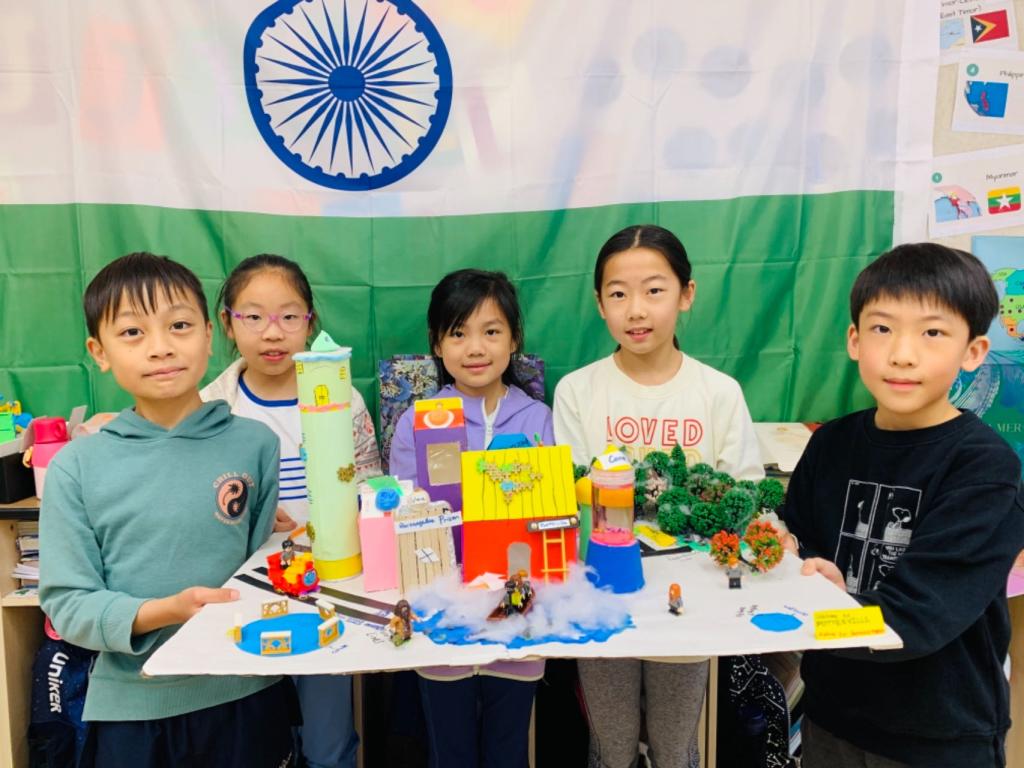
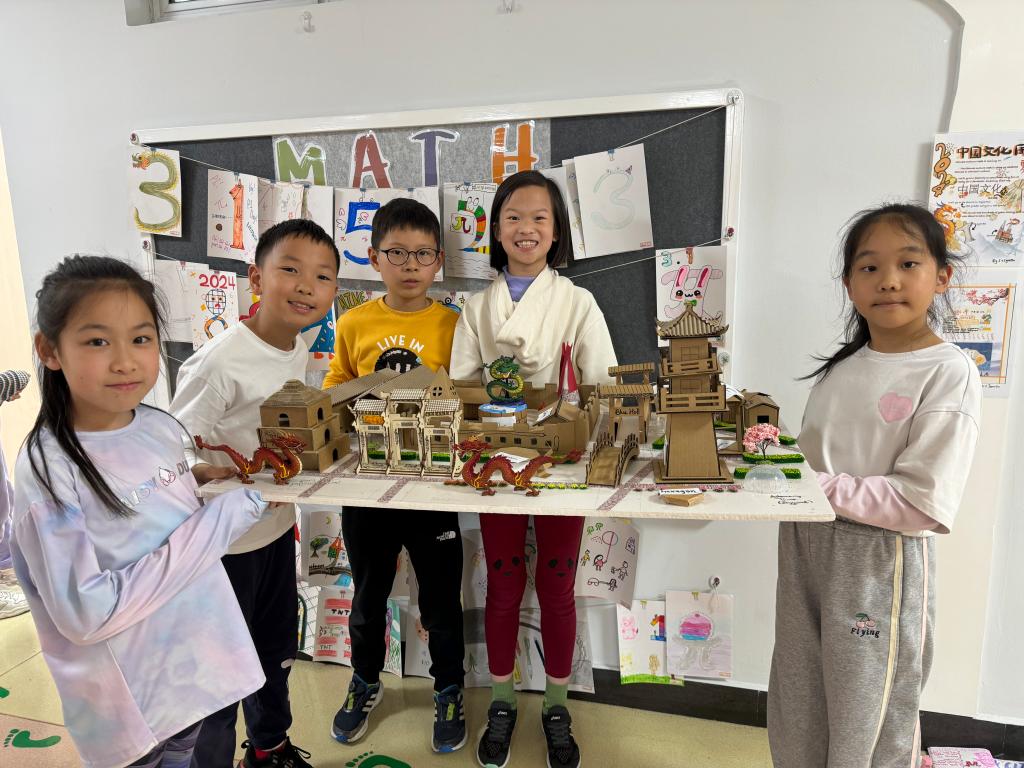
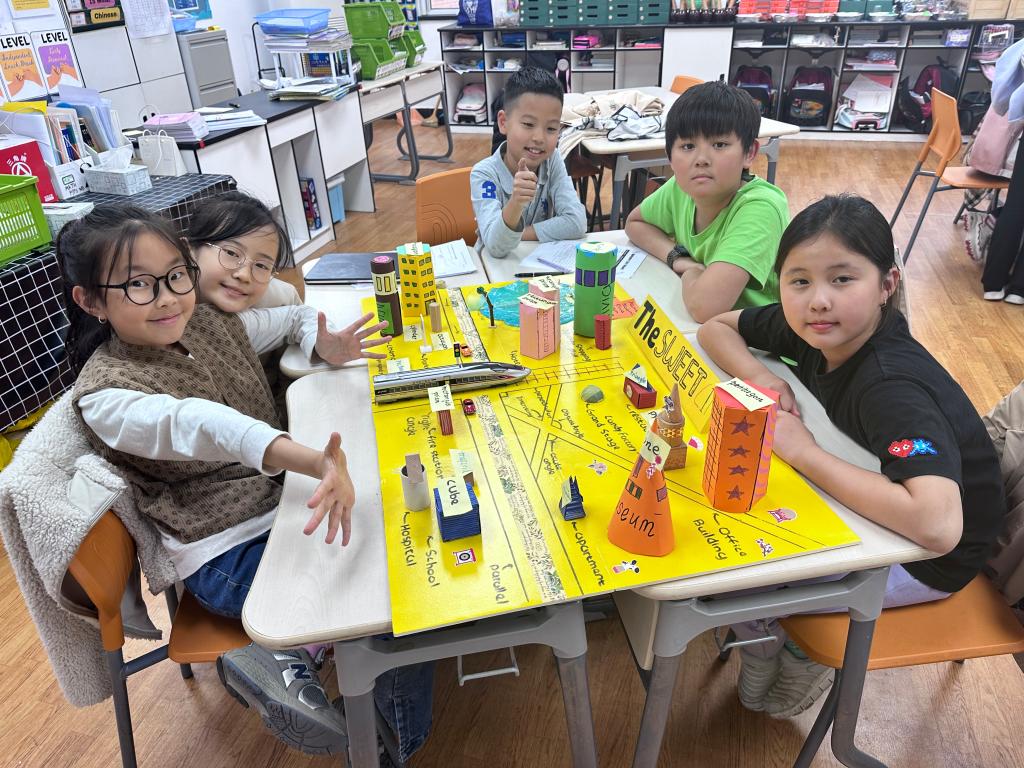
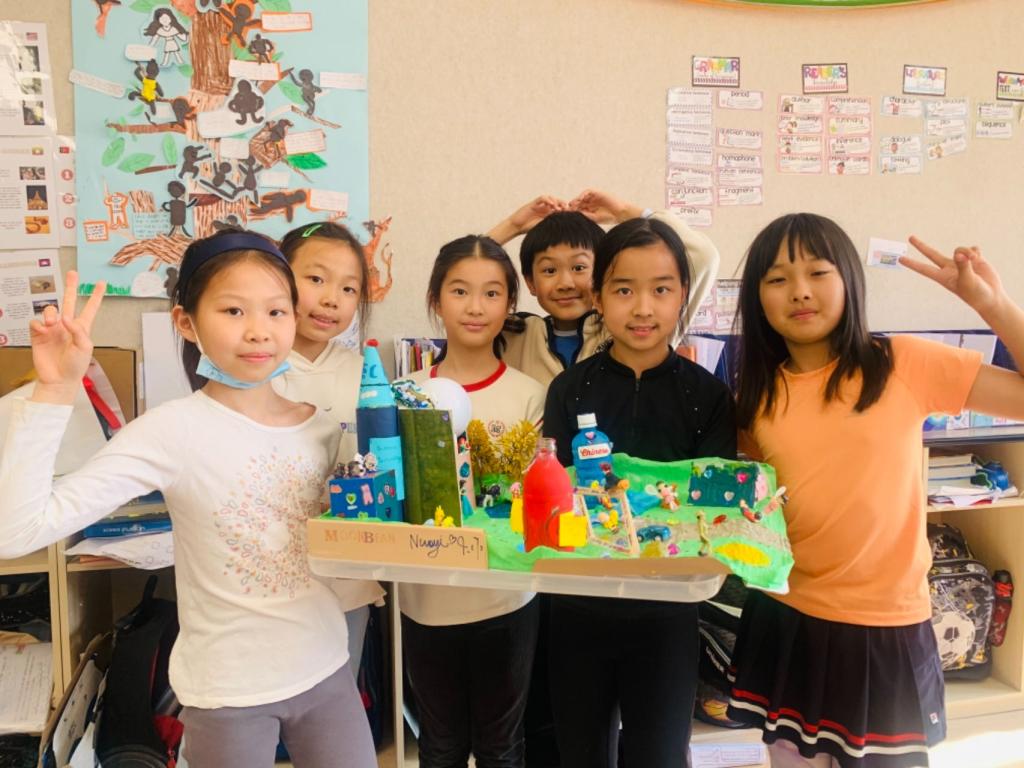
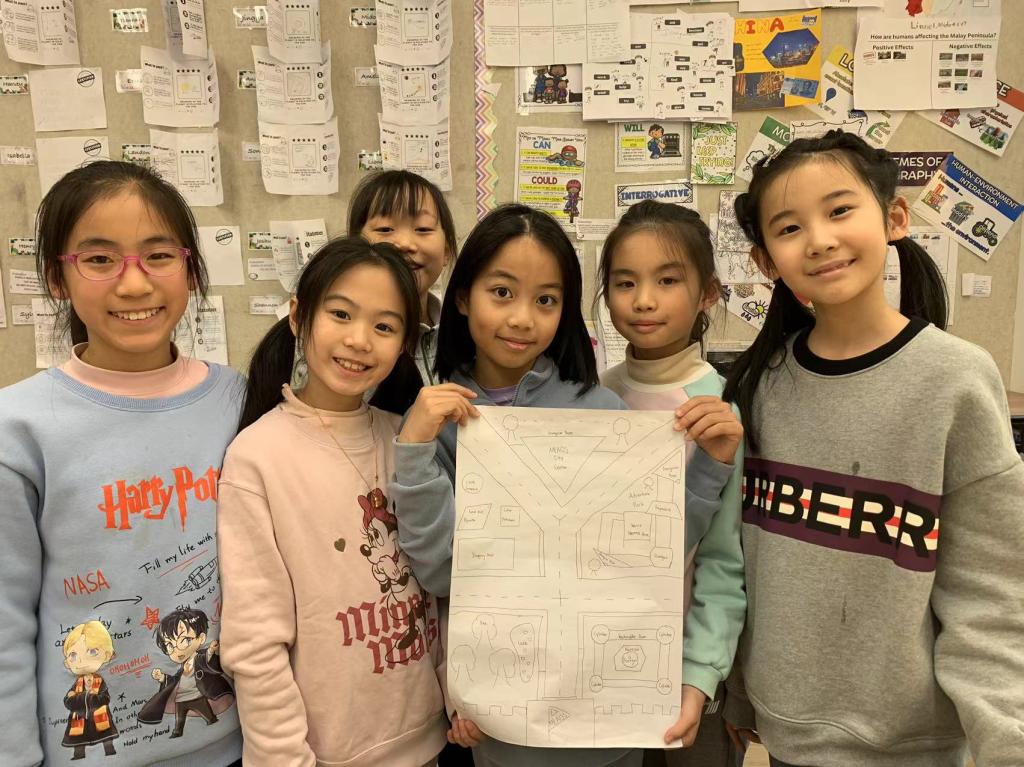
Firstly, the students worked in groups, representing their own construction companies, and signed agreements with the government to commence planning and designing blueprints. Then, they played the roles of little engineers, discussing and modifying architectural plans based on practical considerations. To make this interdisciplinary project more engaging, teachers encouraged students to incorporate certain Chinese elements into their geometric city planning, showcasing their understanding of Chinese culture through architectural design. After procuring the relevant “building materials,” the students enthusiastically began their construction work. Soon, a series of ingeniously crafted geometry cities emerged, each with its own unique features. Some were intertwined with Minecraft and pixel worlds, some were themed around Chinese dragons, while others exhibited traditional Chinese architectural styles such as pavilions and towers... Simultaneously, they didn't forget to incorporate geometric knowledge from textbooks into their constructed cities, labeling parallel lines, perpendicular lines, and intersecting lines on streets, bridges, and highways, and assigning names of corresponding solid figures to parks, lakes, and skyscrapers. Finally, the children created illustrated city brochures showcasing the design concepts, construction features, and layout of their cities to attract tourists and potential residents. Currently, these meticulously crafted geometric city models are on display in the atrium of the Zhongxing Building, captivating both teachers and students. Starting from April 8th, fourth-grade students will also act as judges, voting for the five most popular geometry cities among the groups.
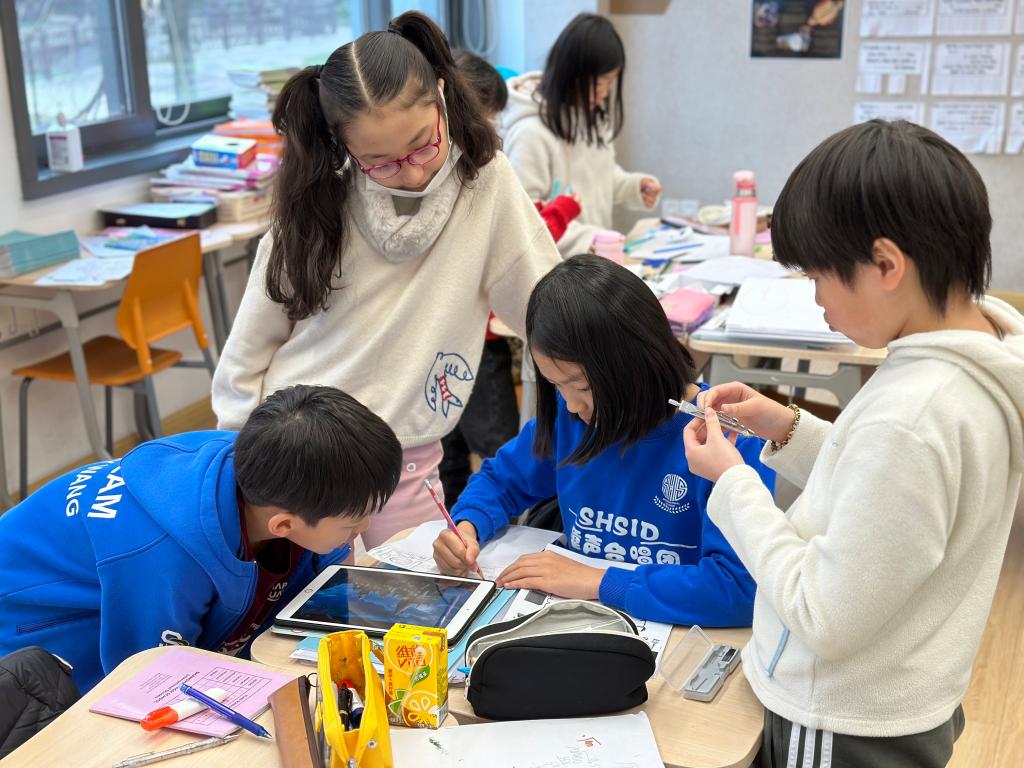
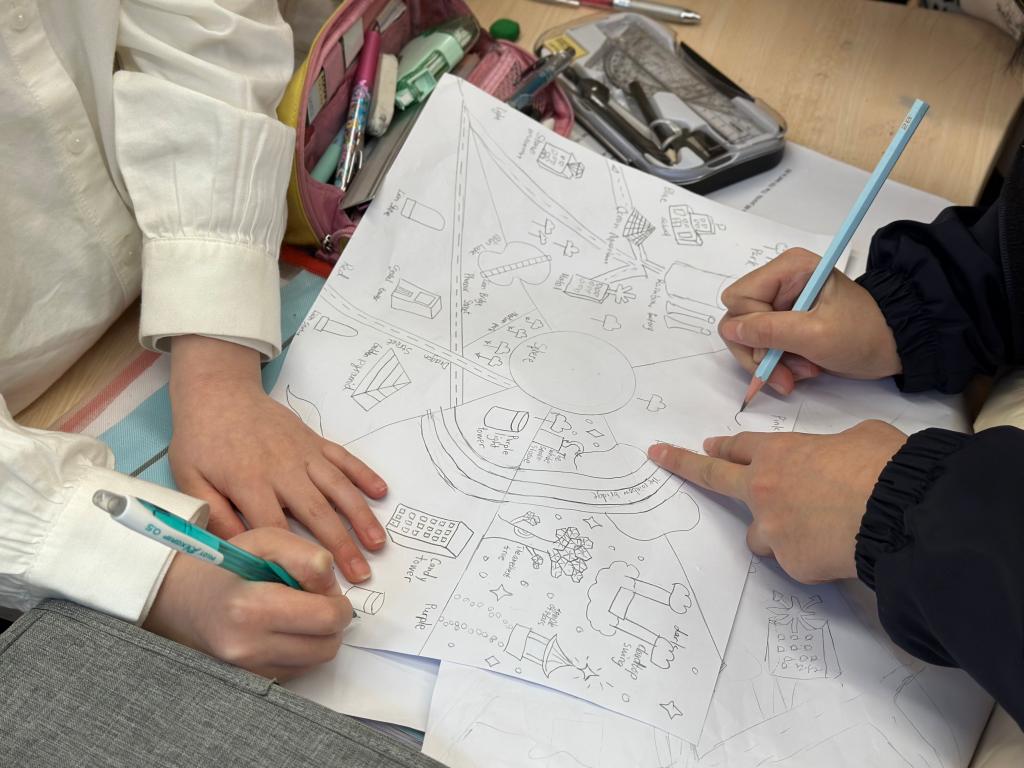
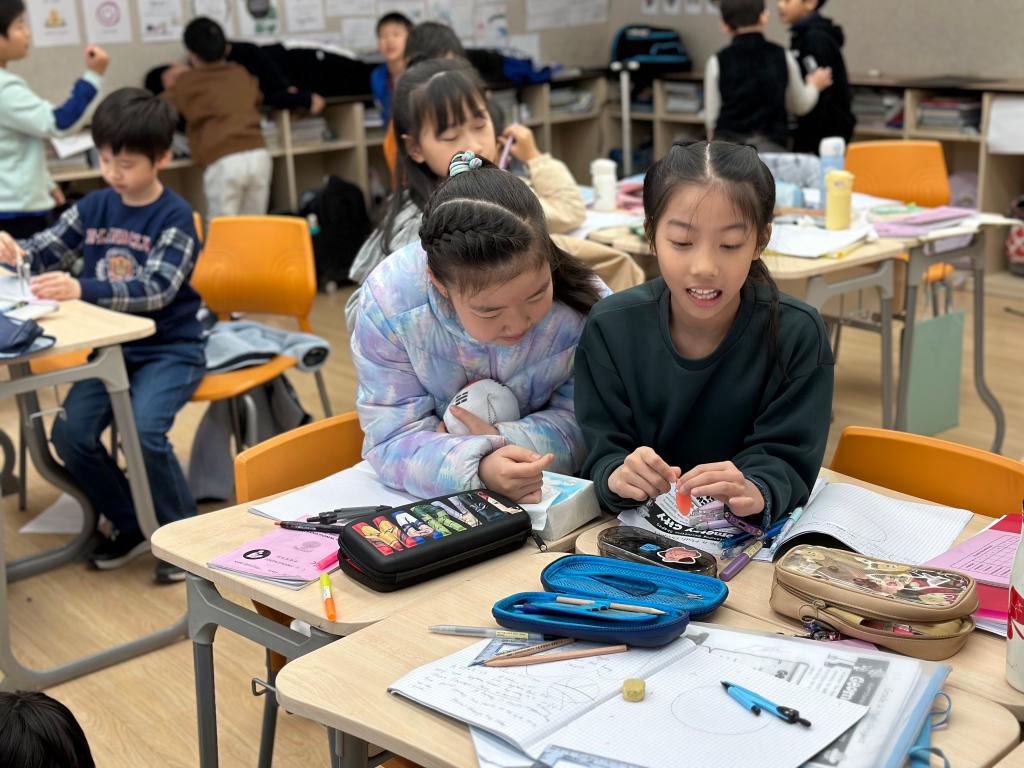
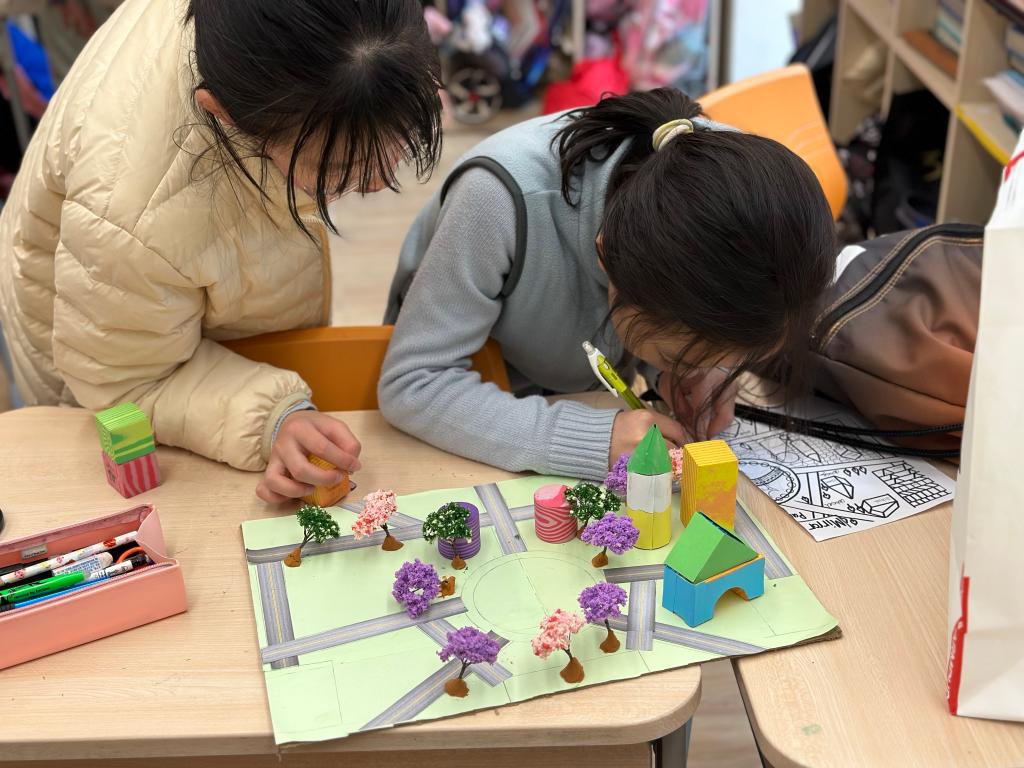
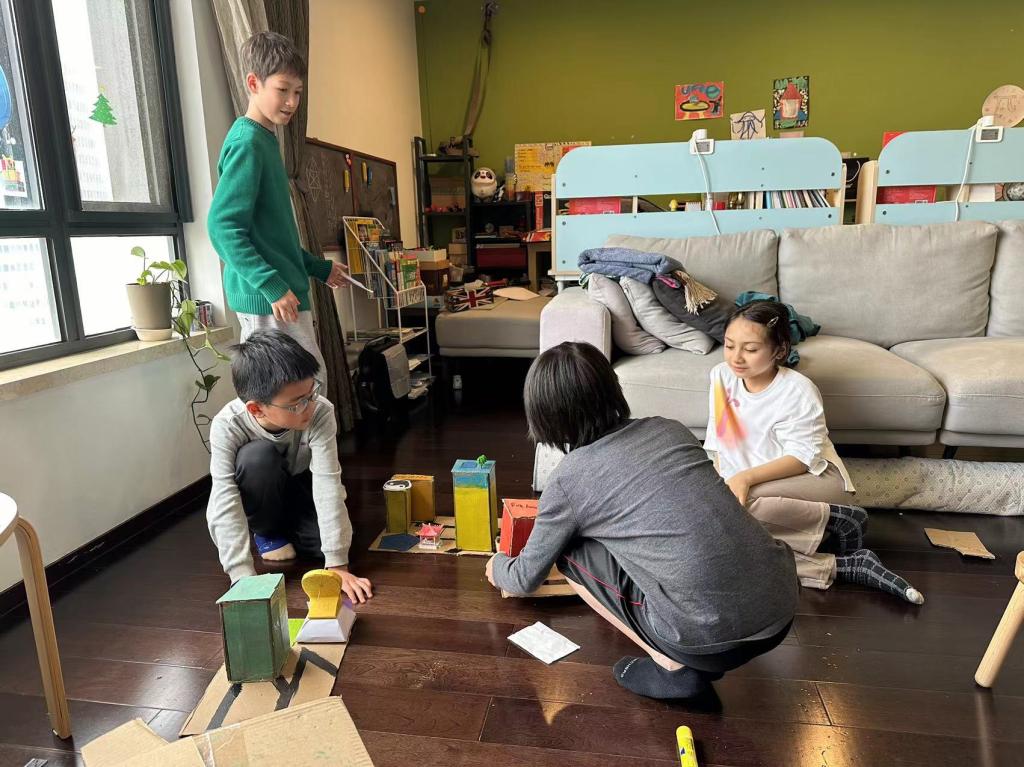
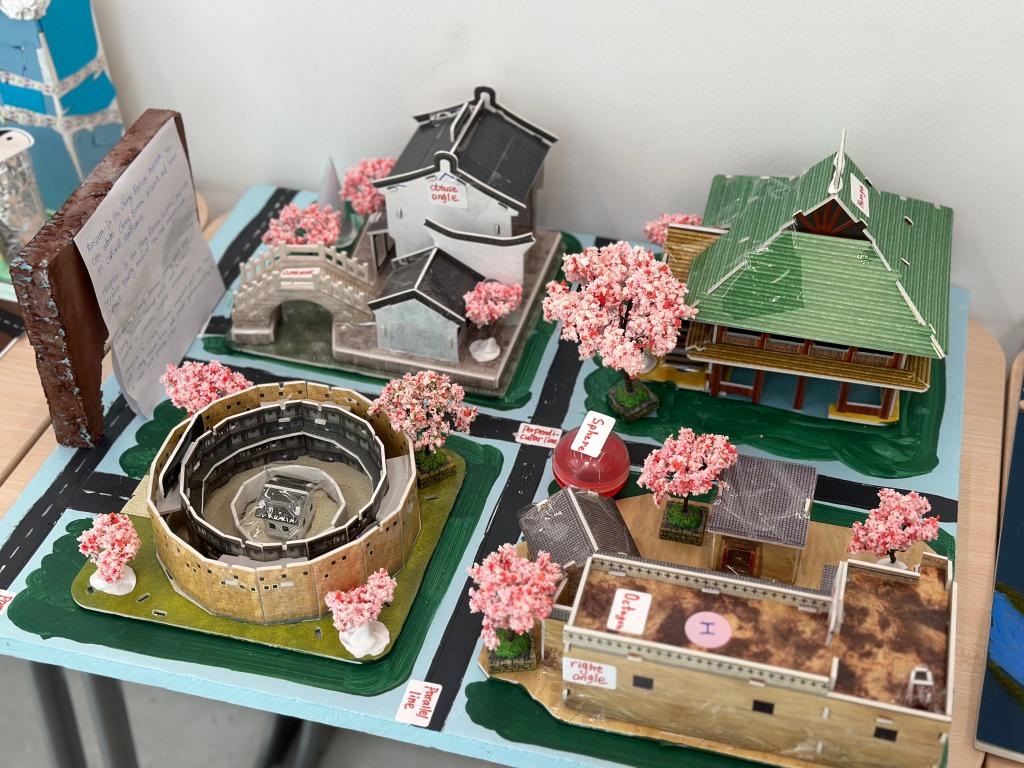
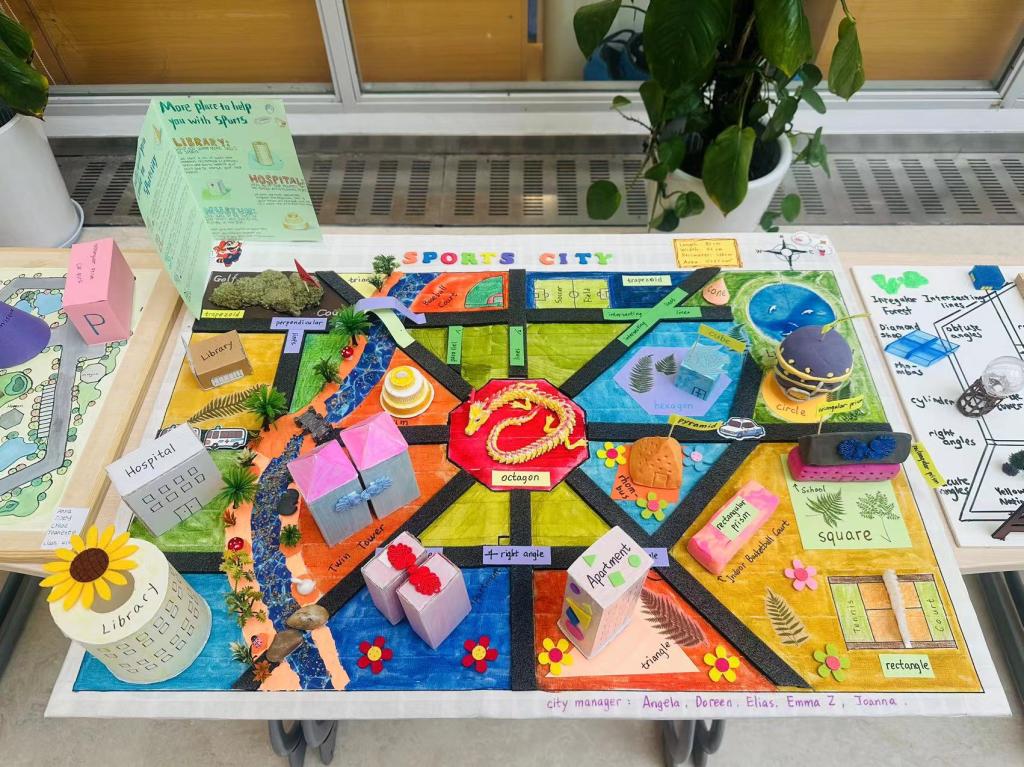
Chinese cultural elements bring new creative sources to this classic project for fourth-grade students. Students are required to incorporate a variety of Chinese cultural elements into their geometry cities. To achieve this, they first familiarized themselves with the structural characteristics of Chinese architecture, such as orientation towards the south, symmetry along the central axis, and mortise and tenon structure, through research and reading materials. They further explored the underlying traditional cultural concepts such as yin-yang, Five Elements, heaven and earth, and auspicious and ominous directions. After thorough preparation, students showcased a myriad of creativity in their design works. Exquisite wood carvings, flower tiles, and diamond-shaped windows were awe-inspiring, along with unique equatorial sundials, Tai Chi diagrams, stone arch bridges, Go boards, and dragon boats. Some students even integrated Chinese characters into their city designs: roads named after flowers, inverted “Fu” characters, and auspicious door plaques, demonstrating their unique understanding of Chinese culture. This interdisciplinary project not only honed students’ planning and teamwork skills, applying their mathematical and geometric knowledge to real-life situations, but also expanded their understanding of Chinese culture, which reflects SHSID’s tradition of interdisciplinary teaching.
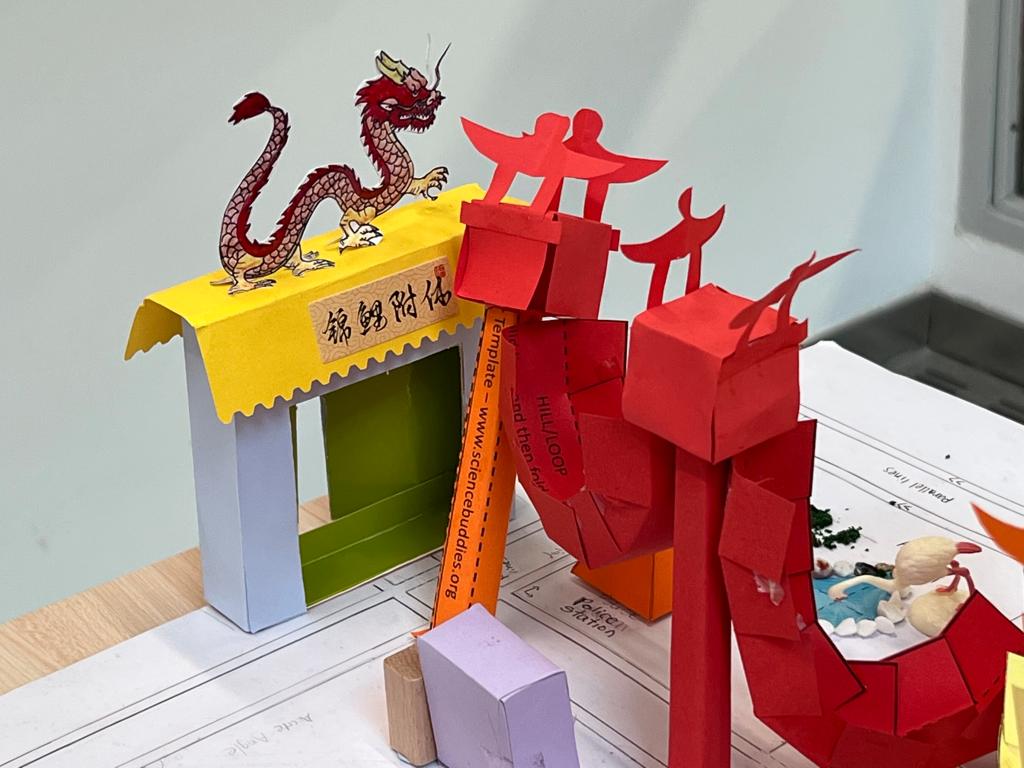
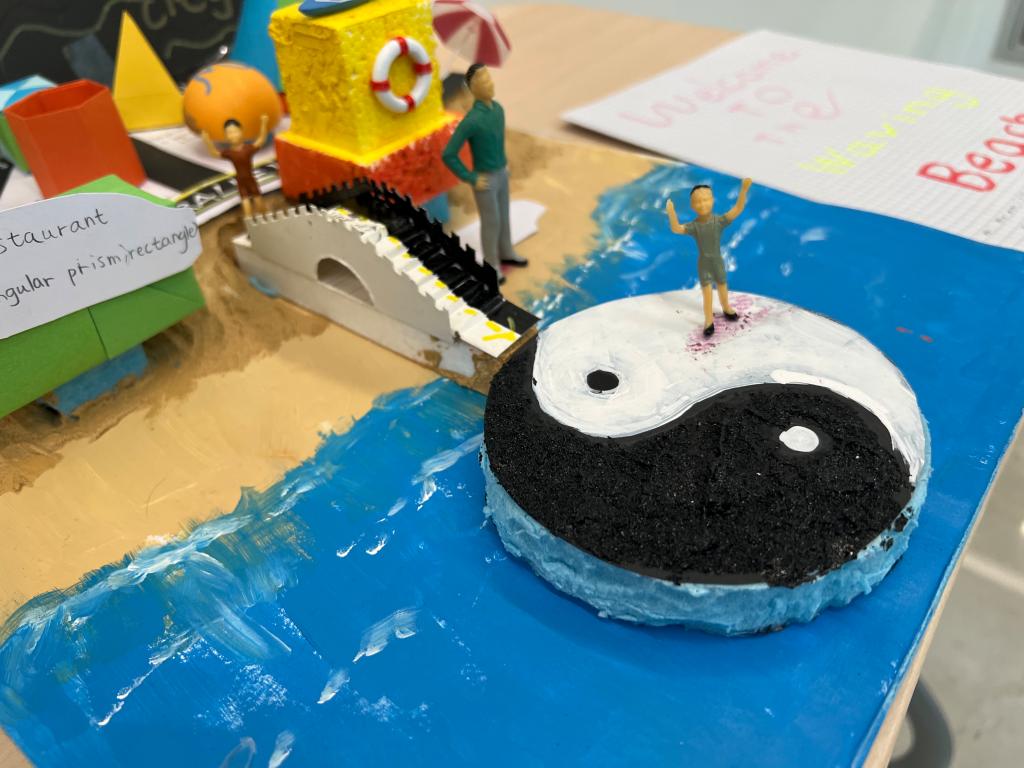
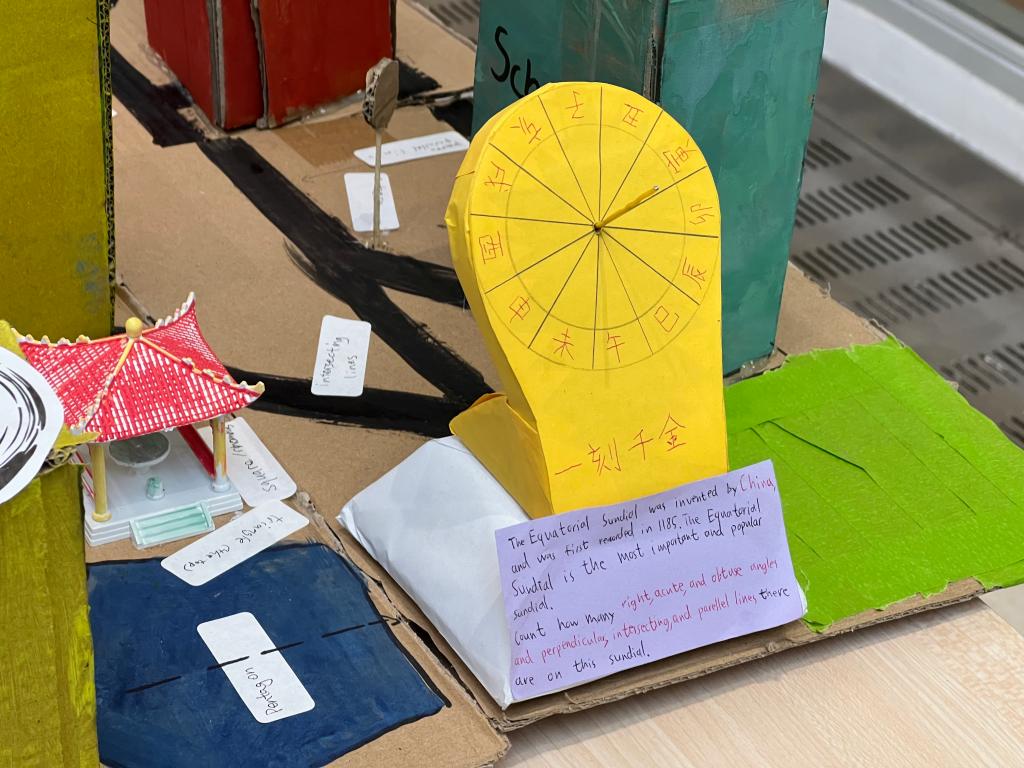
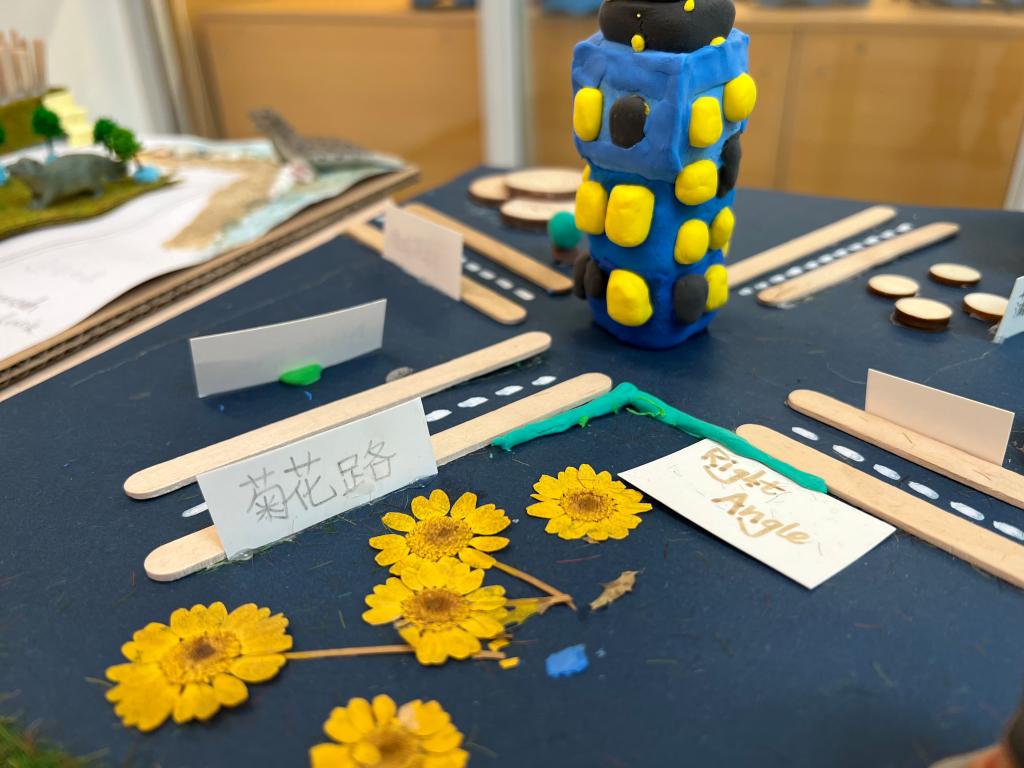
Written by Yuchen Xie
Pictures by G4 math teachers
Edited by Cong Luo, Bianca Noguera